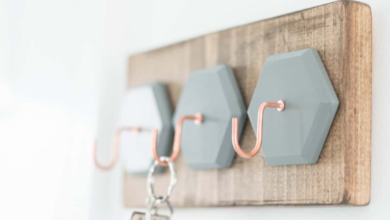What Should Be Included in a Contract Cleaning Specification?

Getting a contract cleaning specification wrong can cost your business more than money. It can mean missed inspections, staff complaints about hygiene, or worse, a workplace accident traced back to poor cleaning standards.
Most facility managers don’t realise how much can ride on a properly written cleaning spec. You might think it’s just a list of tasks, but it’s actually the document that protects you when things go wrong. When contract cleaning agreements fail, it’s usually because the specification was too vague or missed critical details.
The truth is, a weak specification leaves you exposed. You can’t hold a cleaning contractor accountable if you never told them what “clean” actually means in your building.
Why the Specification Matters More Than You Think
Here’s what happens without a solid specification sheet. The cleaning team shows up, does what they think is right, and you’re left frustrated when it doesn’t match your expectations. Maybe they’re mopping floors but ignoring skirting boards. Perhaps they’re emptying bins but not sanitising touch points.
You end up in disputes. The contractor says they did the job. You say it’s not good enough. Who’s right? Without a written specification, you’ll never know.
A proper spec removes the guesswork. It tells the cleaning team exactly what to do, how often to do it, and what standard you expect. Think of it as your insurance policy against substandard work.
Start With Your Building Layout
Before writing anything, walk through your premises. Note down every area that needs cleaning. Don’t just say “offices” or “toilets.” Break it down room by room.
List reception areas, meeting rooms, kitchens, storage cupboards, stairwells, and any outdoor spaces you’re responsible for. Each zone has different cleaning needs. Your reception might need daily attention because clients see it. That back storage room? Weekly might be fine.
This exercise feels tedious, but it stops cleaners from accidentally skipping areas. If it’s not in the spec, they might assume it’s not their job.
Define Cleaning Frequencies for Each Task
This is where most specifications fall apart. People write “toilets should be cleaned regularly” and think that’s enough. It’s not.
What does “regularly” mean? Daily? Twice daily? After lunch rush? Be specific.
Break tasks into daily, weekly, monthly, and periodic categories. High-traffic toilets might need checking three times a day. Office desks might only need a weekly wipe-down. Carpet deep cleaning could be quarterly.
Think about your building’s actual use. A busy call centre needs more frequent bin emptying than a quiet accounting office. A building with lots of visitors needs more attention to the entrance areas.
Don’t forget to include deep cleaning cycles in your specification. These are the jobs that happen less often but matter just as much. Window cleaning, hard floor maintenance, and upholstery cleaning. If you don’t schedule them, they won’t happen.
See also: Customer Assistance Hotline: 3510963495
List Exact Cleaning Tasks
Saying “clean the kitchen” means different things to different people. One cleaner might wipe the counters and call it done. Another might clean inside the microwave, wipe down cupboard fronts, and sanitise the sink.
Write out each action you expect. For toilets, that might include:
- Clean and disinfect toilet bowls
- Wipe and sanitise seats and lids
- Clean sinks and taps
- Refill soap dispensers and paper towels
- Mop floors with disinfectant
- Remove limescale from fixtures
- Empty sanitary bins
For office areas, be equally precise. Do you want desks wiped? Only if they’re clear, or should cleaners work around items? Should they dust computer monitors or just the desk surface?
The more detailed you are, the less room there is for disappointment.
Set Quality Standards and Methods
Quality means different things in different settings. A hospital needs a sterile atmosphere. An office needs to be presentable. A warehouse needs to be safe.
Define what clean looks like in your building. Should floors be damp-mopped or machine-scrubbed? Do you want antibacterial products used on all surfaces or just high-touch areas?
If you have health and safety compliance requirements, spell them out. Maybe you need colour-coded equipment to prevent cross-contamination. Perhaps you need specific chemicals approved for food preparation areas.
Don’t assume cleaners know your industry’s standards. If you’re in healthcare, education, or food service, reference the relevant UK regulations. Make it clear that meeting these isn’t optional.
Include Health and Safety Requirements
Your cleaners need to work safely, and their work needs to keep others safe too. The specification should cover what personal protective equipment they must wear. It should mention how they store chemicals and what signage they use when floors are wet.
If they’re working outside normal hours, note any security procedures they must follow. Do they need to set alarms? Lock certain doors? Sign in and out?
Risk assessments and method statements should be mandatory before any work starts. Don’t let a contractor begin without them. If someone gets hurt, you’ll wish you’d been stricter about this.
Specify Products and Equipment
Some businesses don’t care what products cleaners use as long as the job gets done. Others have strong preferences, particularly around environmental impact or allergies.
If you want eco-friendly products, say so. If staff have chemical sensitivities, list what’s off limits. If you’ve invested in expensive flooring that needs specific treatments, make that clear.
Equipment matters too. Do you expect the contractor to bring industrial vacuum cleaners, or are they using a domestic Hoover? Will they provide their own equipment or use yours? Who pays when something breaks?
These questions cause arguments later if you don’t answer them upfront.
Cover the Legal Bits
Your specification should confirm that the contractor has proper insurance. Public liability coverage protects you if you damage or hurt someone. Employers’ liability covers their staff.
Check they’re handling waste disposal legally, especially if you produce anything requiring special treatment. Confirm they’re meeting COSHH regulations for chemical handling.
Make sure they understand their responsibilities under the Health and Safety at Work Act. In UK workplaces, everyone shares responsibility for safety. If their work creates hazards, they’re liable.
Plan for Communication
Cleaning often takes place when your building is empty. That makes communication tricky but not impossible.
Establish how you’ll stay in touch with the cleaning supervisor. Email? Phone? A logbook left on site? Decide how quickly they need to respond to issues.
What happens if they can’t complete a task because something’s in the way? Do they skip it or contact you? What if they damage something? Who do they tell?
Clear communication channels prevent small problems from becoming big ones.

